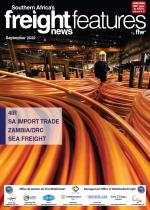No one needs to tell shippers or their forwarders about how high ocean freight rates have climbed in the past two years. It’s been unexpected and unprecedented, and few could have forecast that container rates would more than quadruple over 24 months.Emily Strausbell, a market analyst at Xeneta, says despite a slew of rises in long-term contracted ocean freight rates across key global trade corridors, month-on-month growth is starting to slow – and spot rates continue to weaken – suggesting prices may have peaked. She is, however, quick to add that the situation is far from normal considering that today’s valid long-term agreements are 112% higher than this time last year, and a massive 280% up compared to July 2019.“There are still external factors in the market keeping the rates higher than what they should be,” she says. “Rates are simply not being explained by market fundamentals such as supply and demand. While demand has increased somewhat, the growth has not been that much compared to 2019, and definitely does not justify the freight rates we are seeing.”The ongoing uncertainty brought on by the Covid-19 pandemic, a lack of equipment, congestion – and to a certain extent the demand – pushed rates higher, says Strausbell.But what goes up must come down, and Xeneta analysts agree that carriers have seen the best of the staggering rate rises.“All indications are there that we may have reached a peak and that levels of new agreements are more likely to hold than suddenly leap up again,” she says.July’s increases, for example, were the slowest since January, with upward pressure on long-term agreements easing as spot rates fell across major trades. In addition, volumes on many corridors remain down, with containerised European imports falling by 3% and exports by 6% in the first five months of 2022.“It is, however, not all good news,” says Strausbell. “There are still problems with congestion – and as we move into the peak season, we don’t expect any large turnaround on rates. While nothing is expected to push rates up again, and the worst seems to be over, we have to remember that rates are still exceptionally high and that will remain the case for the foreseeable future.”This is further compounded by ongoing uncertainty, and it continues to impact the market.“Nothing is certain at present. It is really not an easy operating environment,” she says. “While the emergency situation that we saw immediately after Covid and during last year seems to be over, there is still much uncertainty.”The congestion at ports in the US and Europe continued to make an impact on the sector.“Industrial action in the logistics chain is spreading globally, and, of course, we still have the threat of Covid and its impact on economic activity, particularly in China. There are a lot of variables at play, so it’s imperative to stay tuned to the latest intelligence when negotiating long-term contracts to achieve a competitive edge,” she adds.

